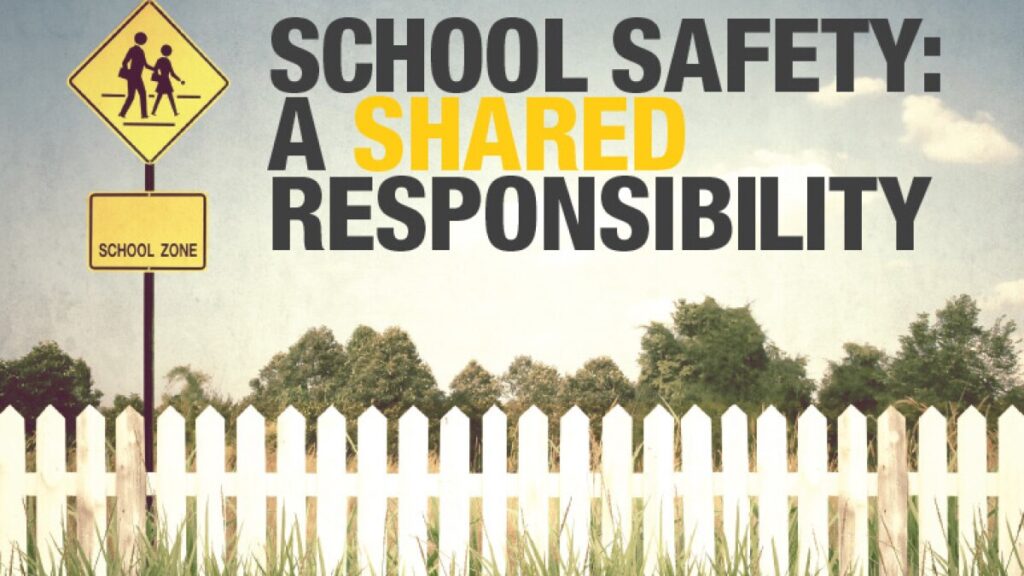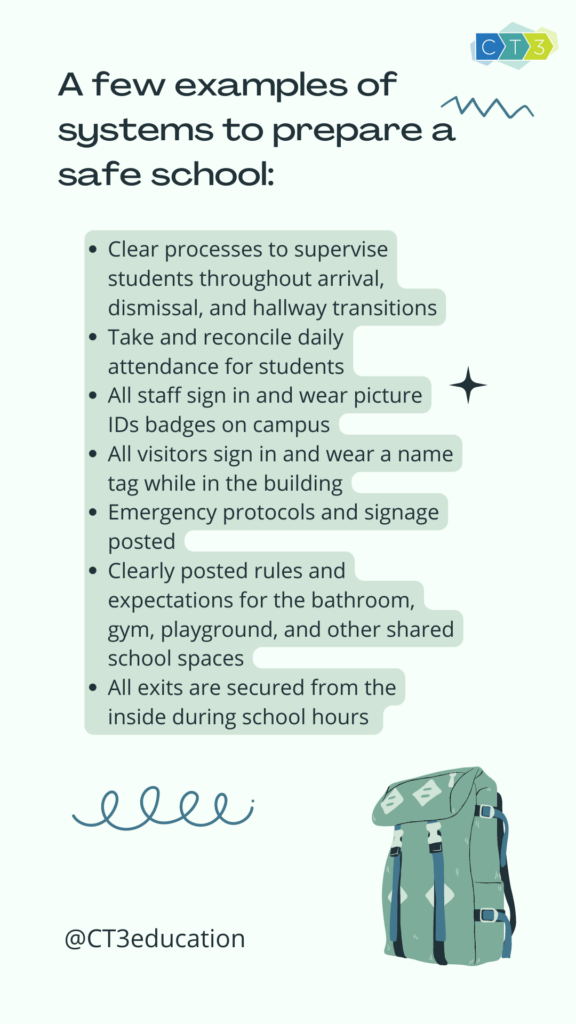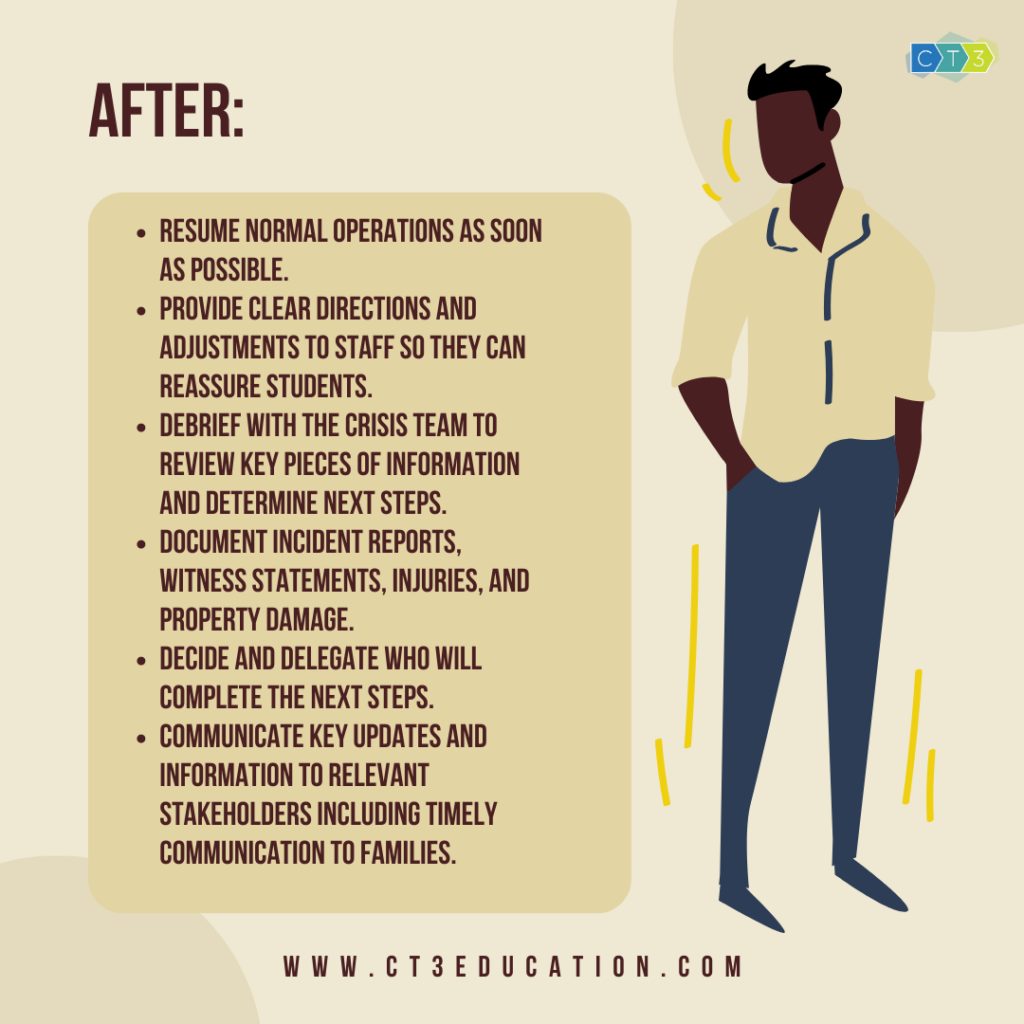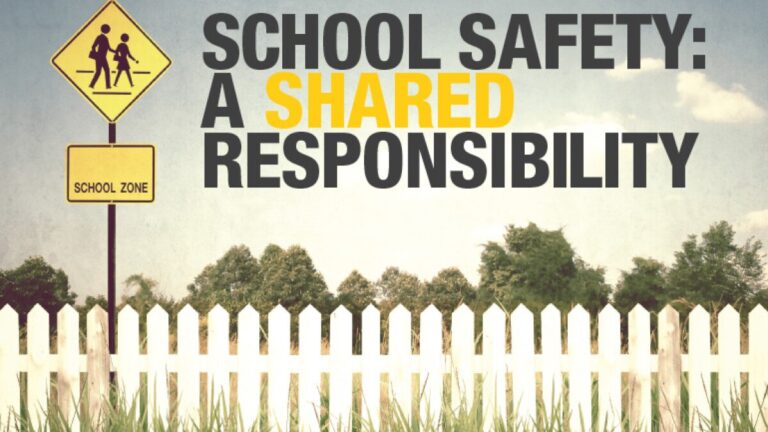
By: SJT
School safety training is a topic that has become increasingly important to school leaders. Leaders are accountable for securing the safety of scholars, staff, and other community members who are on campus. There could be several emergencies that can occur in a school, ranging in severity from internal violent threats to the school to lack of access to clean water.
All schools have required fire drills and weather drills, but many schools don’t have a comprehensive school crisis management plan which outlines what to do before, during, and after an emergency. We want to make sure that school teams are well prepared for emergencies and equipped to train teachers on school safety during typical circumstances. That way, leaders are empowered to protect and serve their schools in the best way possible if and when an emergency occurs on campus.
Preparing a Safe School
The planning for school safety training is grounded in implementing clear and consistent systems to manage the people, the space, and resources. Clear systems to account for students, staff, and visitors to the building empower the leader to quickly make informed decisions in case of an emergency.
Additionally, strong systems to manage the movement of students make it easy to notice when someone or something is out of place. Clear lines of sight, signage, and engaged staff create an environment that is calm, orderly, and predictable. These strategies make it easy for staff to visually scan the environment. That way, if and when an emergency happens, the school team is well positioned to quickly enact the school crisis management plan.

Responding to an Emergency
Sometimes, in spite of thoughtful planning, unexpected events happen at schools. In all cases, using the mnemonic S.A.F.E. will help leaders enact key steps to manage an acute crisis while keeping the community as safe as possible. The S.A.F.E plan can be readily executed with some careful planning, preparation and practice.
Be S.A.F.E- Before:
- Write a school crisis management plan complete with a reunification plan for students and parents.
- Confirm what other community members will support you during a crisis.
- Meet with the members of the school crisis team to assign roles and responsibilities for each member of the crisis team.
- Align on communication strategies to use during a crisis (i.e. walkies, cell phones, etc.).
- Get school safety training for the crisis team on specific protocols (CPI, VITAL, CPR, etc).
- Train teachers on school safety protocols.
- Practice the plan regularly with students.
- Display clear visuals to direct students and staff of what to do during a crisis.
Be S.A.F.E.- During the height of the activity:
| S | Seek safety urgently! Ensure everyone quickly goes to a designated safe zone during the crisis according to your crisis plan. |
| A | Alert the appropriate parties Contact the authorities and relevant members of your crisis team. |
| F | Follow the established safety plan and/or directions from authorities Support your staff in executing the safety plan until the situation is stabilized. |
| E | Examine and evaluate the risk and impact Once the acute situation has been stabilized, examine the environment to evaluate the ongoing risk and the impact of any damage. |
After the acute situation has been stabilized, there are next steps to fully resolve the issue. The leader needs to provide clear guidance to students and staff. The crisis team needs to debrief and sort out next steps. Careful documentation of the events needs to be recorded and submitted. Finally, timely communication to families and other key stakeholders must be prioritized.

A leader has the responsibility to create a comprehensive school crisis management plan as that is key to proactively preparing a safe school environment. By thinking through emergency situations, planning, and preparing, you position yourself to prevent avoidable emergencies and are able to respond effectively when managing a crisis on your campus.
Check out CT3 Education programs such as No-Nonsense Nurturer, Real Time Teacher Coaching, and Real Time Leadership Coaching to find out more about Professional Development for Teachers and Leaders, classroom management strategies, and building relationships with students and their families, and properly addressing important issues in the classroom and school.
Category: Education


